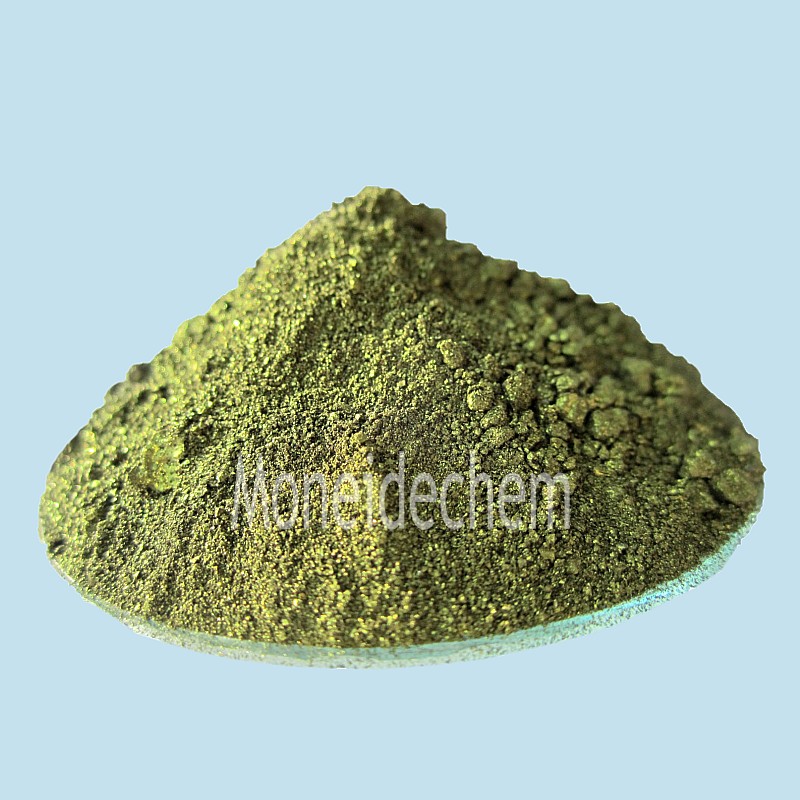|
Chemical Name
|
Fuchsin Basic
|
|
Synonyms
|
Basic Violet 14, Basic Fuchsin; C.I. 42510; Rosaniline chloride; (4-(4-Aminophenyl)(4-iminocyclohexa-2,5-dienylidene)methyl)-2-methylaniline hydrochloride
|
|
Molecular formula
|
C20H20แคลเอ็น3
|
|
CAS No.
|
632-99-5
|
|
EINECS No.
|
211-189-6
|
|
Molecular weight
|
337.85
|
|
Molecular Structure
|

|
|
Details
|
Appearance: Green、metallic shine crystal
Loss on drying: 14.6% max.
Sulfated ash: 0.2% max.
Solubility in alcohol: Passes test
Packing: 25kg/ fibre drum
|
|
Main Application
|
Dye indicators.
|
Fuchsin Basic, a vibrant and versatile chemical compound, holds a significant place in numerous industries, from textiles to biological research. Our company is dedicated to providing top - notch Fuchsin Basic, ensuring it meets the highest standards of quality and purity for our customers around the globe.
Chemical Properties
Fuchsin Basic, with the chemical formula
, is a magenta - colored powder. It has excellent solubility in water and alcohol, which makes it easy to incorporate into different solutions for various applications. This compound is known for its strong color - rendering ability, capable of producing intense and vivid hues. Its chemical structure, featuring a triphenylmethane backbone with amino groups, contributes to its unique coloring properties and reactivity.
Wide - ranging Applications
In the Textile Industry
Fuchsin Basic is a popular choice in the textile industry for dyeing natural and synthetic fibers. It imparts a rich, long - lasting magenta color to fabrics such as cotton, silk, and polyester. The dye's high color fastness ensures that the vibrant shade remains intact even after multiple washes and exposure to sunlight. This makes it ideal for producing high - quality, durable textiles for clothing, home furnishings, and more.
In Biological Staining
In the field of biology, Fuchsin Basic is widely used for staining biological specimens. It can effectively stain cell nuclei, allowing researchers to clearly visualize the structure and organization of cells under a microscope. In histological studies, it helps in differentiating between different types of tissues, aiding in the diagnosis of diseases. For example, in the examination of cancerous tissues, Fuchsin Basic staining can highlight abnormal cell structures, providing valuable information for medical professionals.
In the Paper and Printing Industry
For the paper and printing industry, Fuchsin Basic is used to produce colored inks and dyes. It gives printed materials a distinct and eye - catching magenta color. Whether it's for offset printing, digital printing, or inkjet printing, Fuchsin Basic - based inks can produce sharp and vibrant images, enhancing the visual appeal of brochures, magazines, and other printed products.
Stringent Quality Assurance
Our production process for Fuchsin Basic adheres to the strictest quality control measures. We use advanced manufacturing technologies and high - purity raw materials in our state - of - the - art production facilities. Each batch of Fuchsin Basic undergoes comprehensive testing in our in - house laboratories. We analyze its chemical purity, color strength, and solubility to ensure consistent quality. By maintaining these high standards, we offer our customers a reliable product that performs exceptionally well in their applications.
Custom Packaging and Prompt Delivery
We understand that different customers have diverse packaging requirements. Therefore, we offer Fuchsin Basic in a variety of packaging options, from small sample containers for research purposes to large - scale industrial drums. Our efficient logistics network ensures that your order is shipped promptly and reaches you in perfect condition, regardless of your location. We keep you informed about the shipping status of your order at every stage, providing you with peace of mind.
If you are looking for a reliable supplier of high - quality Fuchsin Basic for your industrial, research, or creative needs, our company is your ideal choice. Contact us today to learn more about our product, get a quote, and explore how we can support your projects.
What is Fuchsin Basic used for?
Fuchsin Basic is a versatile dye with applications spanning microbiology, histology, and industrial processes. In diagnostic laboratories, it serves as a key component in the Ziehl-Neelsen stain for acid-fast bacteria detection, particularly for identifying Mycobacterium tuberculosis. Histologists utilize it in elastic tissue staining protocols to highlight connective fibers. The textile industry employs it for dyeing silk, wool, and leather, producing vibrant magenta hues. In bacteriology, it's used for Gram staining as a counterstain, and in plant pathology to detect vascular tissues. Recent applications include its use as a photosensitizer in photodynamic therapy research and as a redox indicator in certain biochemical assays, demonstrating its continued relevance across scientific disciplines.
What is the Fuchsin Basic?
Fuchsin Basic is a synthetic triarylmethane dye chemically known as rosaniline hydrochloride or magenta II. This vibrant crimson-colored compound consists of a mixture of pararosaniline and rosaniline derivatives, giving it unique staining properties. As a cationic dye, it carries positive charges that facilitate strong binding to negatively charged cellular components. The dye appears as greenish crystals or powder that dissolves readily in water and alcohol to produce intense red-violet solutions. Its molecular structure contains three aromatic rings connected by a central carbon atom, creating an extended conjugated system responsible for its vivid color and lightfastness properties that make it valuable for both biological and industrial applications.
Fuchsin Basic Feature
Fuchsin Basic's most distinctive feature is its intense magenta coloration and exceptional staining selectivity for specific biological structures. The dye exhibits metachromatic properties, appearing different colors when bound to various tissue components. Its cationic nature enables strong electrostatic interactions with acidic cellular elements like nucleic acids and certain polysaccharides. The compound demonstrates good water solubility and moderate lightfastness, though it can fade under prolonged UV exposure. A unique chemical feature is its reversible oxidation-reduction behavior, allowing it to function as a redox indicator in specialized applications. These combined characteristics - vivid color, selective binding, and chemical versatility - make it indispensable in both diagnostic staining and industrial dyeing processes.


























